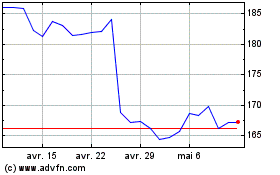By James R. Hagerty
This article is being republished as part of our daily
reproduction of WSJ.com articles that also appeared in the U.S.
print edition of The Wall Street Journal (June 8, 2019).
Emerging from Army service in 1957, Andrew Craig had job offers
from International Business Machines Corp. and a drug company. He
saw more opportunity in banking.
When he interviewed at banks, he wrote later, "I remember
looking at their senior executives, who were all nearing retirement
age, and thinking, 'I want their jobs!' "
Mr. Craig, who died May 24 at age 88, went into banking when it
was mostly a local business. By the time he retired, he had helped
lead a consolidation wave that eliminated thousands of banks and
created a few giants operating across the nation.
As CEO of St. Louis-based Boatmen's Bancshares Inc. from 1988 to
1996, he used acquisitions to build a strong regional banker in
nine central states. He gave executives baseball bats embossed with
the order to "hit singles," rather than swinging wildly for the
fences. By the mid-1990s, consolidation by bigger banks made
Boatmen's look more like prey than a predator.
Mr. Craig agreed to sell Boatmen's to NationsBank Corp. for $9.5
billion in 1996. The offer was about 2.7 times book value at a time
when twice book value was considered pricey.
Mr. Craig served for 16 months as chairman of NationsBank. In
1998, NationsBank merged with BankAmerica Corp. and adopted the
Bank of America name.
Reflecting consolidation, the number of U.S. commercial banks
with federally insured deposits shrank to 8,777 in 1998 from 13,165
when Mr. Craig began his career 41 years earlier.
NationsBank's CEO, Hugh McColl, was so eager to buy Boatmen's
that he arrived for negotiations in St. Louis in a Cardinals
baseball cap. "Andy is a terrific trader," Mr. McColl said after
signing the deal. "That's why the price is as high as it is."
After retiring from Bank of America, Mr. Craig helped found a
venture-capital firm, RiverVest Venture Partners.
Andrew Billings Craig III, an only child, was born March 20,
1931, in Buffalo and raised in the village of Jasper, N.Y. His
parents operated a general store founded by his paternal
grandfather. His father also delivered groceries to farmers, worked
as an insurance agent and served on the board of a local bank.
On Sundays, Mr. Craig recalled in an unpublished memoir, the
family attended a Presbyterian church and heard "fire-and-brimstone
admonitions about all of our sins." The pastor "didn't seem to have
a lot of credibility with my parents and me. We just listened."
Young Andrew grew to 6-foot-4 and was on his high school's
basketball, baseball and track teams. At half-time in basketball
games, he dashed into the stands, still wearing his basketball
shorts, to blow his trumpet for the pep band.
After graduating from high school in 1949, he spent a year at
the Manlius military school near Syracuse, N.Y., and then enrolled
at Cornell University. Because his mother wanted him to become a
physician, he started on a pre-medicine major before switching to
zoology and then sociology. He served as president of his
fraternity. He transferred to the University of Buffalo to earn the
final credits needed for a bachelor's degree in sociology.
He served in the Army as an intelligence officer and met his
future wife, Virginia Jean Coskery, known as Jake, on a blind
date.
Buffalo, N.Y.-based Manufacturers & Traders Trust Co. hired
him in 1957 as a management trainee with a salary of $4,800 a year.
He was put to work answering customer questions and complaints. It
wasn't the challenging job he expected. "I wondered how the heck I
had gotten myself into this position," he wrote in his memoir.
To improve his chances for promotion, he started taking
accounting and banking courses at night. "From day one, I began to
calculate my career progression," he wrote. The goal was to learn
every aspect of banking, a task that proved "interesting,
challenging -- and sometimes boring."
After three years of training, he became a commercial loan
officer, starting with individual secured loans and moving on to
small business loans, then credits to big companies. In 1974, he
was promoted to CEO of M&T. He jumped to BancOhio Corp. in 1983
and two years later joined Boatmen's, a bank formed in 1847 to
serve workers on steamboats plying the Mississippi River. He rose
to CEO in 1988.
"Acquisitions are a line of business with us," he told a trade
publication in 1994. "We have a staff working on acquisitions all
the time."
Mr. Craig is survived by his wife of 61 years, Virginia, two
daughters and two grandsons.
His hobbies included hunting and fishing. A hammerhead shark he
caught off Florida was displayed in one of his offices. In his
retirement, he sometimes competed with friends in piloting
miniature remote-control sailboats.
Write to James R. Hagerty at bob.hagerty@wsj.com
(END) Dow Jones Newswires
June 08, 2019 02:47 ET (06:47 GMT)
Copyright (c) 2019 Dow Jones & Company, Inc.
International Business M... (NYSE:IBM)
Graphique Historique de l'Action
De Mar 2024 à Avr 2024

International Business M... (NYSE:IBM)
Graphique Historique de l'Action
De Avr 2023 à Avr 2024
